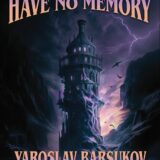Note: This post first appeared in the Roswell Daily Record…
Combine a long hot summer and the current events in the world, between politics and the pandemic, and I guess it’s not a mystery why I’ve been in the mood to read a lot of post-apocalyptic (PA) science fiction novels recently. I thought I’d share a few of my favorites with you this month.
These are definitely not romances, although some of the books may contain romantic elements, and quite a few of them are heavy on the horror element — I tend to skim the worst parts frankly, but I’ll keep reading if the rest of the story grabs me. As a longtime fan of “The Walking Dead” TV series and movies like “World War Z,” I’m pretty much prepared for the gore factor in some of these books. I’ve read a lot in this genre.
I started reading apocalyptic fiction with the classic “Alas, Babylon” by Pat Frank, detailing what happens in one small Florida community after the U.S.A. and Russia go to war and the bombs drop. The book has held up pretty well since he wrote it in 1959, although its age shows now, since the advent of cellphones and the internet and many other things Frank didn’t have and which his characters have never heard of. I still reread this one at least once a year. When I first read it as a 12-year-old, reading my dad’s battered paperback edition, the whole concept of what life might be like after a huge event of this nature was fascinating.
Usually, in these novels, the events are kicked off by a war, or a virus, which may result in zombies or other no-longer-human creatures to prey on the main character survivors, or an electromagnetic pulse (EMP) from space or a hostile nation, or any number of other events, some scarily plausible. There are some genre tropes a PA author will probably tick off along the way, including the breakdown of civilization, the looting and scavenging, the “preppers” — good and bad — who were ready for this and take it all in stride, the gangs and criminals and bad guys, sometimes a grand conspiracy theory-come-true behind the disaster, which must be fought along with just trying to survive the day — there are lots of variations.
 Mike Kraus is a prolific author and publisher who co-writes with various other individuals and I enjoyed his six-book Flashpoint series, written with Tara Ellis. Beginning with a gamma ray event, which decimates the world’s population, this series takes a disparate group of people and chronicles their various journeys and efforts to survive. I was drawn in by the characters and the fact that one part of the story dealt with how a small mountain town survived the initial event and then became something of a magnet drawing in the other characters. I felt the series provided me something different than the standard “after the apocalypse” fare.
Mike Kraus is a prolific author and publisher who co-writes with various other individuals and I enjoyed his six-book Flashpoint series, written with Tara Ellis. Beginning with a gamma ray event, which decimates the world’s population, this series takes a disparate group of people and chronicles their various journeys and efforts to survive. I was drawn in by the characters and the fact that one part of the story dealt with how a small mountain town survived the initial event and then became something of a magnet drawing in the other characters. I felt the series provided me something different than the standard “after the apocalypse” fare.
 Jacqueline Druga is a very prolific writer who tends to write standalone books, although she has several long-running series — and even created two seasons of a limited TV show based on one of her series, although the reviews relating to the production values and quality of the acting weren’t all that encouraging. Once I discovered her, I went through many titles on her extensive backlist of novels, although I didn’t try any of the series yet. Her science is a bit questionable — especially in the early books — as far as the specific causes for the various apocalypses she visits on her characters, but one thing I especially enjoyed about her novels was that the main character is usually a woman who hasn’t been too concerned about disasters, “bug out bags,” “prepping” or anything else beyond her family’s daily life — pretty much an average citizen suddenly thrust into this new world who has to survive. Druga has written a huge variety of disasters — one of my particular favorites was “Red Line,” which starts with a group of morning commuters on the subway, totally unprepared for the end of the world. I also liked “The Last Woman,” although it starts off in a very grim fashion.
Jacqueline Druga is a very prolific writer who tends to write standalone books, although she has several long-running series — and even created two seasons of a limited TV show based on one of her series, although the reviews relating to the production values and quality of the acting weren’t all that encouraging. Once I discovered her, I went through many titles on her extensive backlist of novels, although I didn’t try any of the series yet. Her science is a bit questionable — especially in the early books — as far as the specific causes for the various apocalypses she visits on her characters, but one thing I especially enjoyed about her novels was that the main character is usually a woman who hasn’t been too concerned about disasters, “bug out bags,” “prepping” or anything else beyond her family’s daily life — pretty much an average citizen suddenly thrust into this new world who has to survive. Druga has written a huge variety of disasters — one of my particular favorites was “Red Line,” which starts with a group of morning commuters on the subway, totally unprepared for the end of the world. I also liked “The Last Woman,” although it starts off in a very grim fashion.
Just a warning: In her books, whole families may perish. If a heroine starts off with a husband and three children, odds are, she’ll be widowed and down to one or none offspring fairly rapidly. Not always, but fairly often. There’s a lot of loss for the main characters to endure before the story focuses in on how they go on to survive the grim new world.
 “DRYP: The Final Pandemic” by R. A. Scheuring was extremely well written, I thought, although the plague the author sets loose on the world kills pretty much everyone. No zombies here, but a 99% mortality rate for anyone who catches the bug. One of the primary settings for the plot’s action was close to where I live, so that was fun as the characters moved around on the freeways I drive. This is a standalone, so far, but I have hopes there’ll be a sequel because the few survivors do appear to be moving toward a meeting at the end of the novel.
“DRYP: The Final Pandemic” by R. A. Scheuring was extremely well written, I thought, although the plague the author sets loose on the world kills pretty much everyone. No zombies here, but a 99% mortality rate for anyone who catches the bug. One of the primary settings for the plot’s action was close to where I live, so that was fun as the characters moved around on the freeways I drive. This is a standalone, so far, but I have hopes there’ll be a sequel because the few survivors do appear to be moving toward a meeting at the end of the novel.
 Sam Sisavath’s Fall of Man series started off with a bang, as many people suddenly become “rabid crazies,” ravening beasts — not zombies — who only seek to kill. I liked the extremely capable ex-soldier hero and in the second book. I was impressed by his equally indomitable wife. Book three won’t be out for a while but I’ll be reading it. “The Break” was the first book and held my interest from start to finish, including the motley group of survivors the hero collects and defends, despite his best intentions to be a loner.
Sam Sisavath’s Fall of Man series started off with a bang, as many people suddenly become “rabid crazies,” ravening beasts — not zombies — who only seek to kill. I liked the extremely capable ex-soldier hero and in the second book. I was impressed by his equally indomitable wife. Book three won’t be out for a while but I’ll be reading it. “The Break” was the first book and held my interest from start to finish, including the motley group of survivors the hero collects and defends, despite his best intentions to be a loner.
 Right now, I’m on book 10 of a 12-book zombie series by Adrienne Lecter, The Green Fields and I am pretty enthralled. I’ve been reading until late in the night, finishing about one book a day. Lots of genuine gore and horror along the way, but I’m hooked on Bree and Nate, the two main characters, and their relationship. The primary focus of the novels is not the romance, and these two — a scientist and a deadly soldier — bicker almost constantly but I can’t get enough of them. I stick around for the adventure and the moments where they stop bickering and let their emotions show. It’s been fascinating to watch them evolve and how they support each other, each in their own way. I’m also interested in the various approaches the other survivors are working on in an attempt to create some kind of civilization despite the zombie presence.
Right now, I’m on book 10 of a 12-book zombie series by Adrienne Lecter, The Green Fields and I am pretty enthralled. I’ve been reading until late in the night, finishing about one book a day. Lots of genuine gore and horror along the way, but I’m hooked on Bree and Nate, the two main characters, and their relationship. The primary focus of the novels is not the romance, and these two — a scientist and a deadly soldier — bicker almost constantly but I can’t get enough of them. I stick around for the adventure and the moments where they stop bickering and let their emotions show. It’s been fascinating to watch them evolve and how they support each other, each in their own way. I’m also interested in the various approaches the other survivors are working on in an attempt to create some kind of civilization despite the zombie presence.
This is a series where I’ve relied heavily on reader reviews in Amazon to tell me if I want to keep reading and to warn me about particularly gruesome events coming in the next installment. Lecter doesn’t shy away from describing disturbing scenes in quite graphic and lengthy detail. I personally like spoilers rather than being surprised, but I won’t give you any here. If you decide to try the books, don’t get too attached to anyone not named Bree or Nathan is my sincere advice. “Incubation: Green Fields Book #1” is the first book in the series, which the author has completed. Several of the books end in cliffhangers but the next novel is always right there with one click immediately if you’re a voracious reader like me.
I have a few sci-fi romances and the latest Mary Balogh Regency romance waiting on the Kindle for when I’ve finished all this apocalyptic, dystopian reading and need a change of pace to lighter fare. I’m sure I’ll be more than ready by then.










